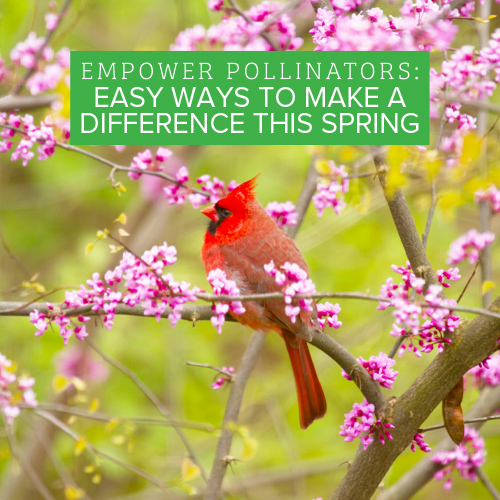
Join the pollinator preservation movement this spring and make a difference! Birds, bees, and butterflies need our support and your role in nature’s cycle is important. With just a few simple actions, your impact on pollinators will reach from garden to globe. Let’s empower our friendly pollinators and support their crucial role in our world. Unleash their power with these easy springtime strategies that you can implement in your Texas garden.
The Value of Beneficial Pollinators
Why is pollination important? More than 80 percent of our flowering plants rely on pollinators for their reproduction and most of our food depends on the success of these plants. In fact, one out of every three bites of food we eat is because of birds, bees, and butterflies. That equates to over 150 different food crops, all dependent on pollination, this includes delicious fruits, vegetables, chocolate, coffee, nuts, and spices.

Without pollinators, the world would not survive. We wouldn’t have food to eat, clean air to breathe, or clean water to drink. Flowers and trees absorb carbon dioxide and produce vital oxygen. The water cycle depends on plants returning moisture to the atmosphere, and we depend on plants to help purify it for drinking and everyday use. Plants keep the soil in place, preventing erosion and the decline of soil quality.
With the influx of invasive species reducing food resources and spreading diseases, the demise in habitat availability, and changes to our climate, pollinators need all the help they can get!
Creating a Safe Space for Pollinators in Your Texas Garden
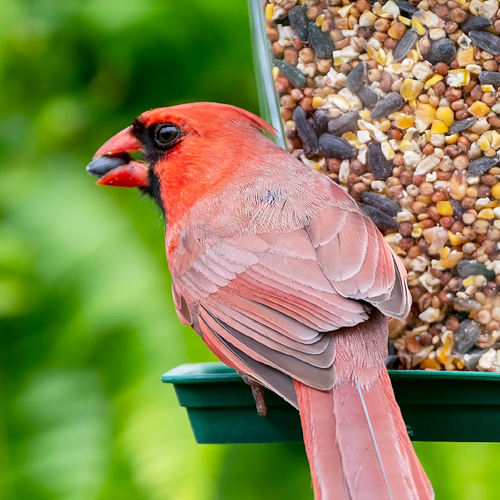
The decrease in habitat and other wildlife sanctuaries makes it harder for pollinators to reach their breeding site or to move to a better area. Without a sustainable habitat, migratory birds can also be greatly impacted. Their migration path can become too weak and lack areas to rest and refuel.
Creating your own garden refuge will not only attract beneficial pollinators to your space, but it will also impact the overall health of our Texas birds, bees, and butterflies.
Bird Seed & Feeders

Start by hanging bird feeders and nesting sites. Birds consume up to 10,000 calories a day and they use most of their energy foraging for food to meet their needs and to feed their chicks. Setting up bird feeders can reduce the stress and energy they waste hunting for food. This allows them to spend more time nesting and resting. Bird feeders are an easy food source that they can count on as a reliable and plentiful source of nourishment.
Attract more birds to your garden with the Stokes Select Easy Fill Metal Mixed Seed Bird Feeder. Its spring-loaded push-button top effortlessly opens with one touch, making it super easy to refill. The seed tray with a wide perch rim helps keep dropped seeds off the ground and allows larger birds to comfortably feed. It has 4 large perches to help feed more birds at once.

Give our Texas birds the best with high-fat foods for a well-balanced meal and fill your feeders with Calloway’s Premium Bird Seed. Our bird seed blends are chock full of the proteins, carbohydrates, and fats that birds crave. Each “flavor” contains a variety of ingredients that will appeal to various types of birds.

Hummingbirds also begin their migration during the spring, usually aligning with bloom times. As we know, Texas weather can be unpredictable, impacting the arrival of our spring flowers which could limit reliable food sources available for hummingbirds.
Place a hummingbird feeder in a shaded area away from other feeders, as they can be territorial of their sweet nectar. At Calloway’s and Cornelius, we have a vast collection of fun and funky feeders to spruce up your outdoor space! Fill them with high-energy foods like More Birds® Hummingbird Nectars. These premium nectars come in powder and ready-to-use formulas that are rich in both Vitamin D and Calcium.
Nesting Sites & Birdhouses
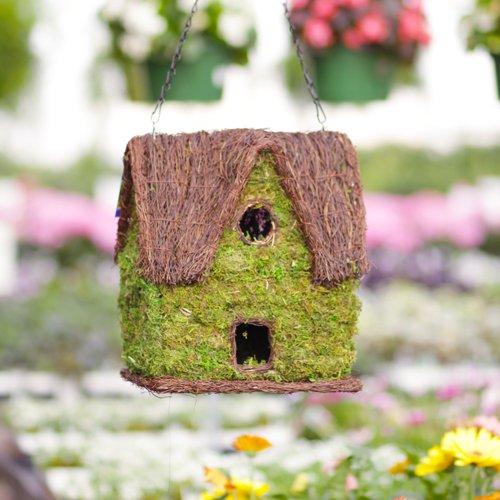
Providing nesting sites for refuge could be a lifesaver for many as finding safe areas with adequate shade can be difficult. Birdhouses create a safe place for raising babies and resting with added protection from predators and extreme weather. Try the SuperMoss® Woven Birdhouses for their durable design and multipurpose use. They are made with natural materials and are constructed to last and maintain their shape while out in the elements.

For a classic option, protect our Texas birds with a stylish Rustic Farmhouse Wren House. The functional design has a hanging nest box with a pitched roof for small cavity dwellers. The floor detaches for easy cleaning, and it comes ready to hang with an attached jute rope hanger.
Birdbath & Water Access
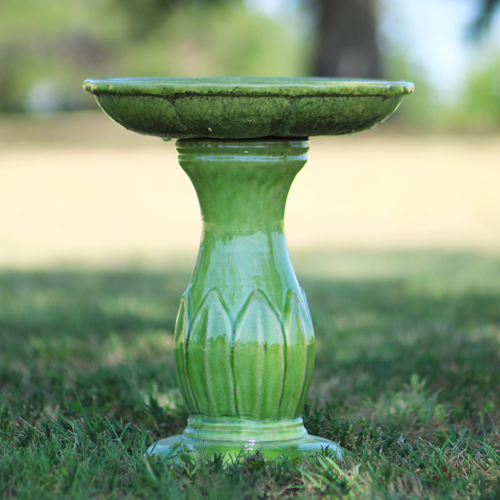
All living creatures need water to survive, and just like humans, pollinators need year-round access to a fresh supply. Water plays a crucial role in hydration, cleaning, cooling body temperatures, and reproduction. Attract the beauty of nature to your garden with a birdbath. Place it in a shaded spot and keep it frequently refreshed so there is always clean water available (and to avoid mosquito infestations.) Fill the shallow dish with no more than 3 inches of water and let nature take its course.
Feeling creative? Make your own DIY Birdbath Planter!
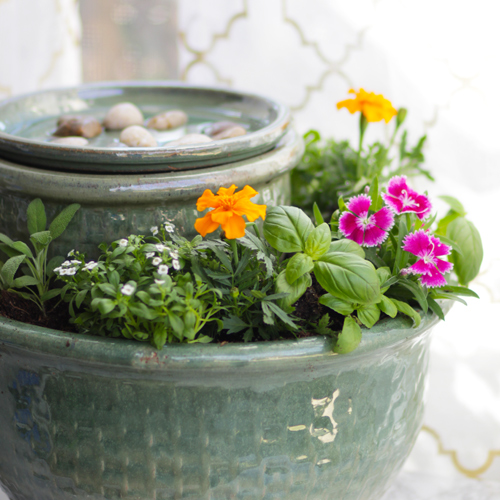
This stylish creation is as useful as it is pretty. Attract beneficial pollinators to your Texas garden with this one-stop shop, full of their favorite plants and refreshing water.
SUPPLIES:
- 1 Large Planter or Terra Cotta Pot
- 1 Small Planter to match
- Saucer
- Calloway’s Premium Potting Soil
- Decorative Stones
- Pollinator-Friendly Plants
- Watering Can
- Garden Gloves
STEP ONE:
First, choose 2 planters and a matching saucer for your creation. Choose a large planter in the 18-20-inch size range, a smaller one in a matching style, 8-10-inch in size, and a saucer that rests perfectly on top of the small planter. Most saucers have a recessed bottom which should fit nicely into the rim of the small pottery.
You can select from our vast collection of stylish ceramic pottery in vibrant colors and textures or use terra cotta pottery for a natural look. You can even paint the terra cotta to take your look to the next level!
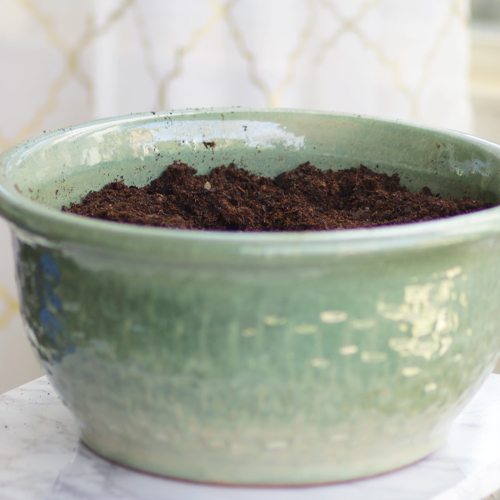
Next, fill the large planter, leaving about 2-3 inches from the top, with Calloway’s Premium Potting Soil to provide the optimal environment for healthy continued growth.

Then, add the smaller pot. You can place it in the center or near the back of your creation, whichever allows the most room for your plants. Secure it into the soil and add more soil around it for your plants.
STEP TWO:
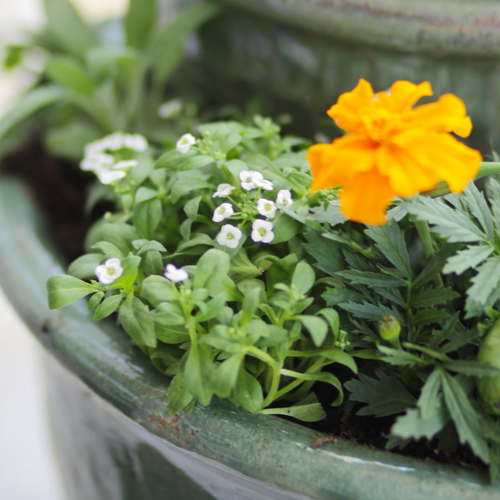
Include a variety of plants that attract butterflies, birds, and bees! This will make your bird bath even more irresistible to our feathered friends. Choose plants with similar sun and water requirements for your gardening success.
STEP THREE:

Complete your birdbath planter by placing the saucer on top of the smaller planter. Add large stones for additional areas where bees and butterflies can rest and drink. Fill the saucer with water and water in your plants thoroughly.

Display in your Texas garden for our beneficial pollinators to enjoy. Sit back and watch the show of nature visiting your newest attraction.
Designing Pollinator Gardens for an Immediate Impact
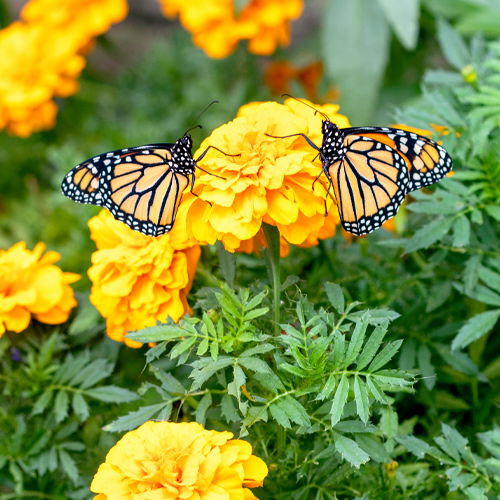
Early blooming flowers provide immediate relief for pollinators. Annuals are a great way to add color and pattern diversity to your flowerbeds while supporting our Texas birds, bees, and butterflies.
Create an attractive palette of hues with your annual blooms, grouping colors for visual interest. This will allow pollinators to navigate more easily with more efficient foraging.
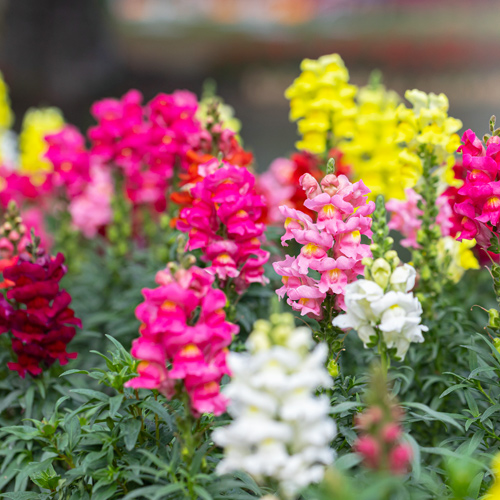
Fragrant blooms will also help lure pollinators to your garden space. Incorporate scented plants like Snapdragons and Alyssum for their nectar-rich flowers and bold colors.
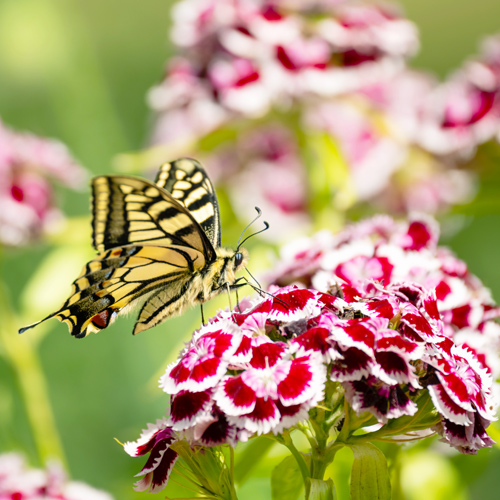
Dianthus and Marigolds add color and diversity to your pollinator gardens. Marigolds are host plants for caterpillars and are a vital source of nectar for butterflies. They are great companion plantings in your vegetable garden because they attract good pollinators and deter pests.
Dianthus flowers are also a favorite of butterflies and hummingbirds. They are hardy and adaptable plants with a long-blooming period. You and the birds will enjoy their clove-like fragrance.
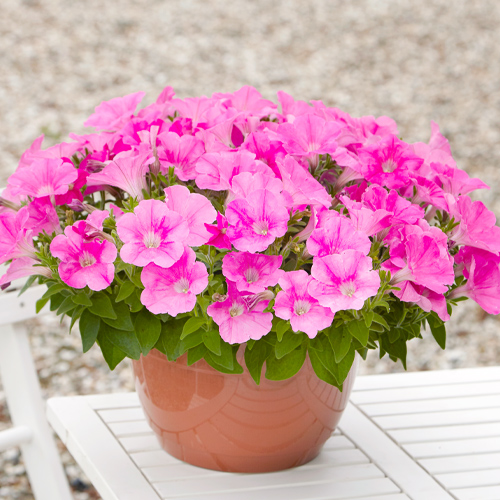
Petunias are also fantastic early spring bloomers. Hummingbirds love the brightly colored, tubular-shaped flowers. They are most attracted to Petunias in shades of red, pink, and orange.

Fresh Herbs will add an instant impact to any pollinator garden while encouraging diversity. Many of your favorite herbs are excellent nectar sources and some are even host plants for butterflies. Plus, you can enjoy the delicious flavors in your meals too.
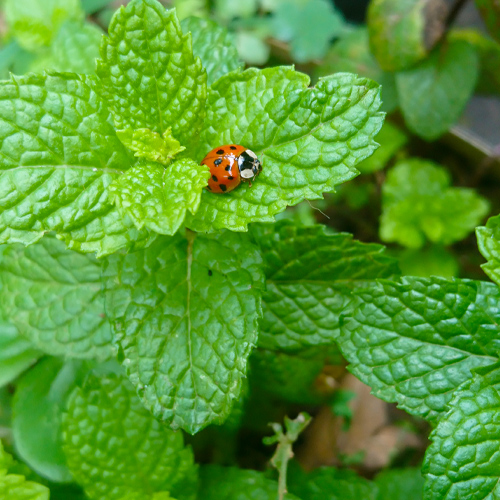
Fragrant herbs like Basil, Mint, Oregano and Sage all produce flower spikes with clusters of blooms, that bees especially enjoy. Beneficial pollinators tend to visit flowers in groupings as a way to conserve their energy. Cilantro, Dill, and Parsley are host plants for butterflies and are ideal for planting outdoors to encourage caterpillar development.
Designing a Year-Round Flowering Landscape to Continuously Attract Pollinators
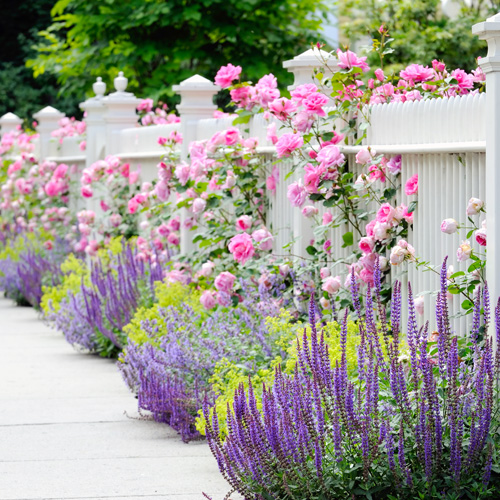
Design your landscape with blooming time and arrangement in mind. While annuals provide immediate seasonal color, ensuring a succession of colorful blooms throughout the year will provide consistent food sources for our friendly pollinators.
Plant trees, shrubs, and perennials that are mid-season and late-season bloomers to help sustain a majority of our pollinating insects and birds throughout the year. They offer resources that are otherwise depleted during the winter months.

Purple Coneflower, or Echinacea, is a pollinator magnet. This tough perennial is easy to grow and drought-tolerant. It is named after its cone-like center full of nectar and pollen that butterflies and bees love. After the flowers are spent, leave the seed heads to attract goldfinches. Purple Coneflower is also a host plant for butterflies.

Native plants such as Salvia greggii are fabulous perennials for our Texas gardens. They are heat-loving, drought-tolerant, and aromatic. Plus, they bloom during the spring, summer, and fall. Bees, butterflies, and hummingbirds can’t resist their spikes of flowers. They love the tubular shape and bright colors.
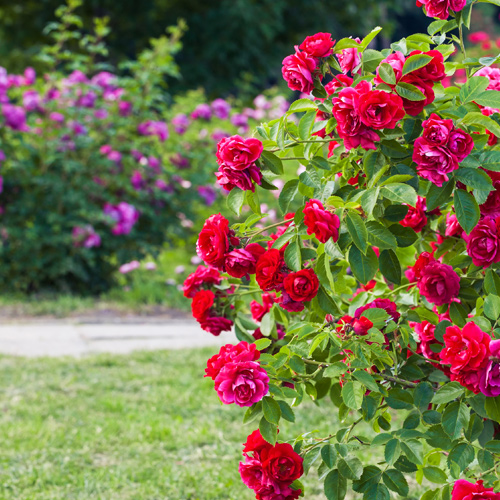
Flowering shrubs like Roses and Kaleidoscope Abelia create an inviting experience for beneficial pollinators. Bees love Roses and their delicious fragrance. They will fly from flower to flower in an attempt to take in the sweet nectar.
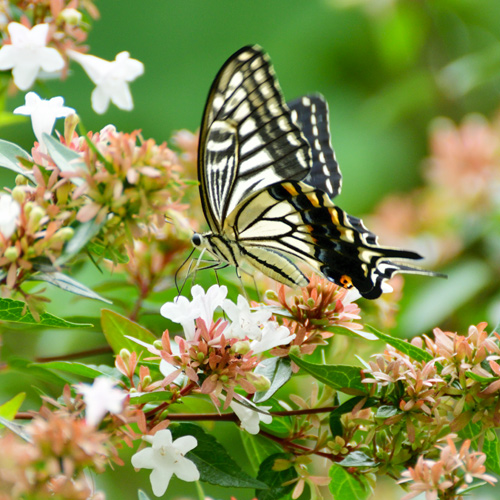
Bees and butterflies love Kaleidoscope Abelia because of its variegated foliage and long blooming period. Their tubular flowers arrive in the summer and last through the fall.

Trees are the backbone of any pollinator-friendly landscape. Woody plants provide shade, shelter, and nourishment.
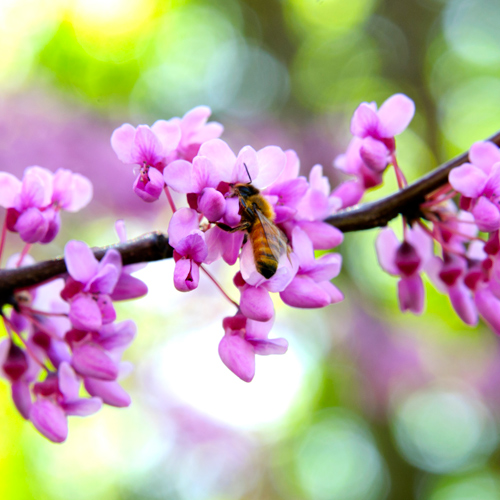
Red Maples and Redbuds are popular pollinator plants in early spring. Red Maples are one of the first to produce flowers in the spring. It is a host plant for many different caterpillar species, bees gather the nectar and pollen from its flowers, and birds enjoy snacking on the seeds. In spring, Pollinators love the bright pink flowers that Redbuds produce.
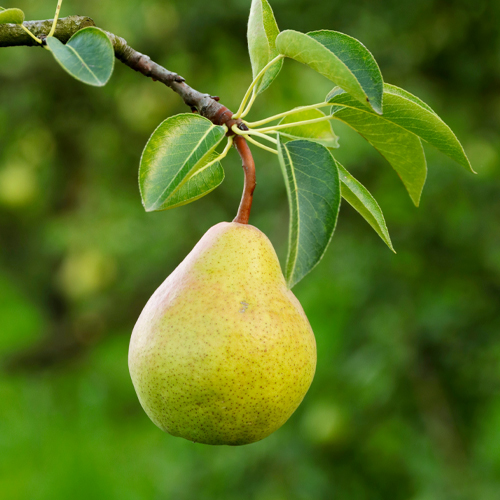
Fruit Trees such as Pear, Apple, Plum, and Peach are also a favorite for bees. They provide a critical food source for bees. The flowers are rich in pollen and nectar that bees need to use for nourishment and to make honey.
Shop with Ease

At Calloway’s and Cornelius, we are here to help with all your gardening needs! Visit us today and explore our stunning collection of vibrant blooms, stately trees and shrubs, stylish pottery, lush indoor plants, and so much more! Shop any of our 28 neighborhood stores, where we have served our loyal customers for over 35 years.
Have questions? Ask our Texas Certified Nursery Professionals; they are here to help!